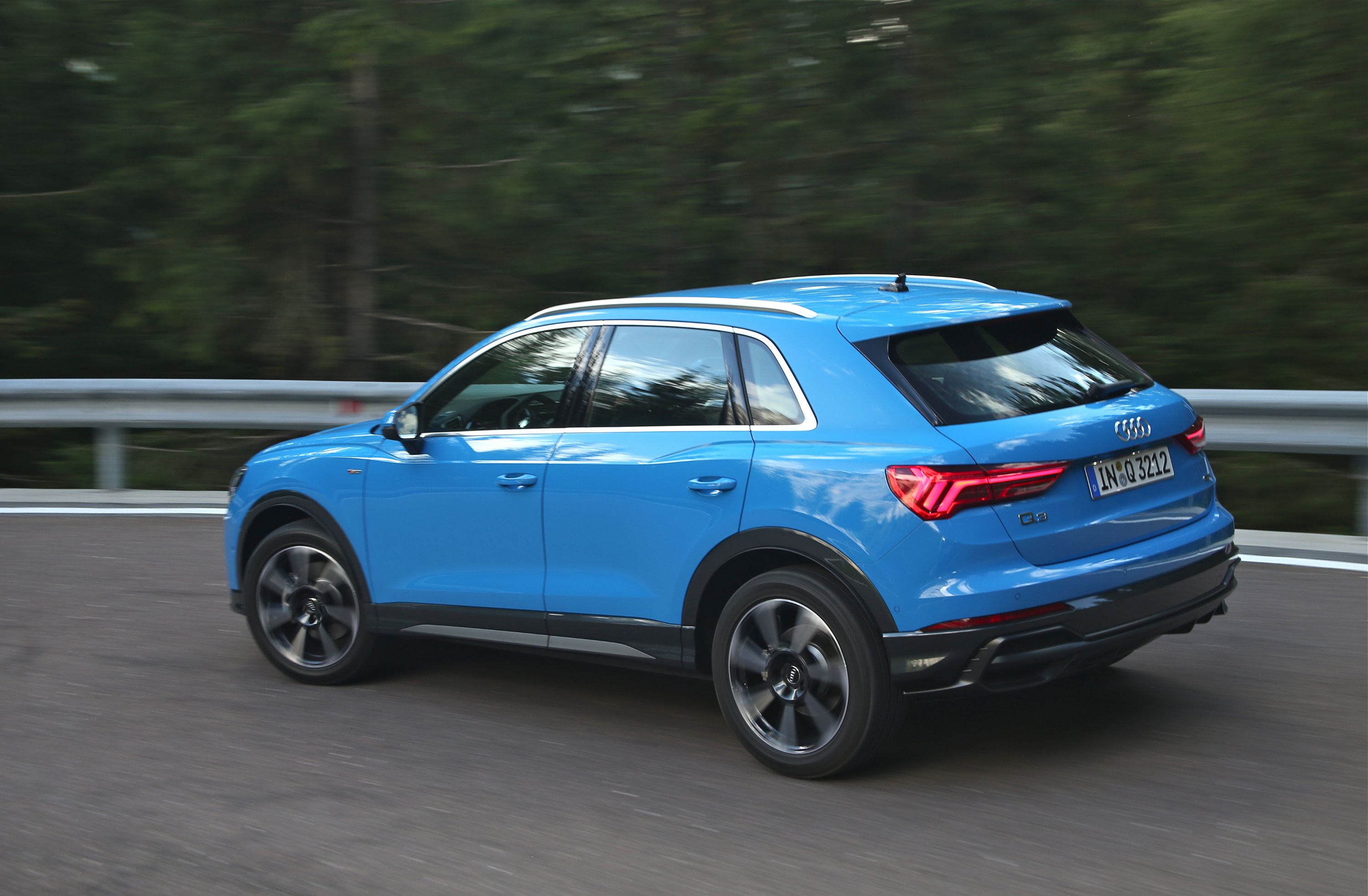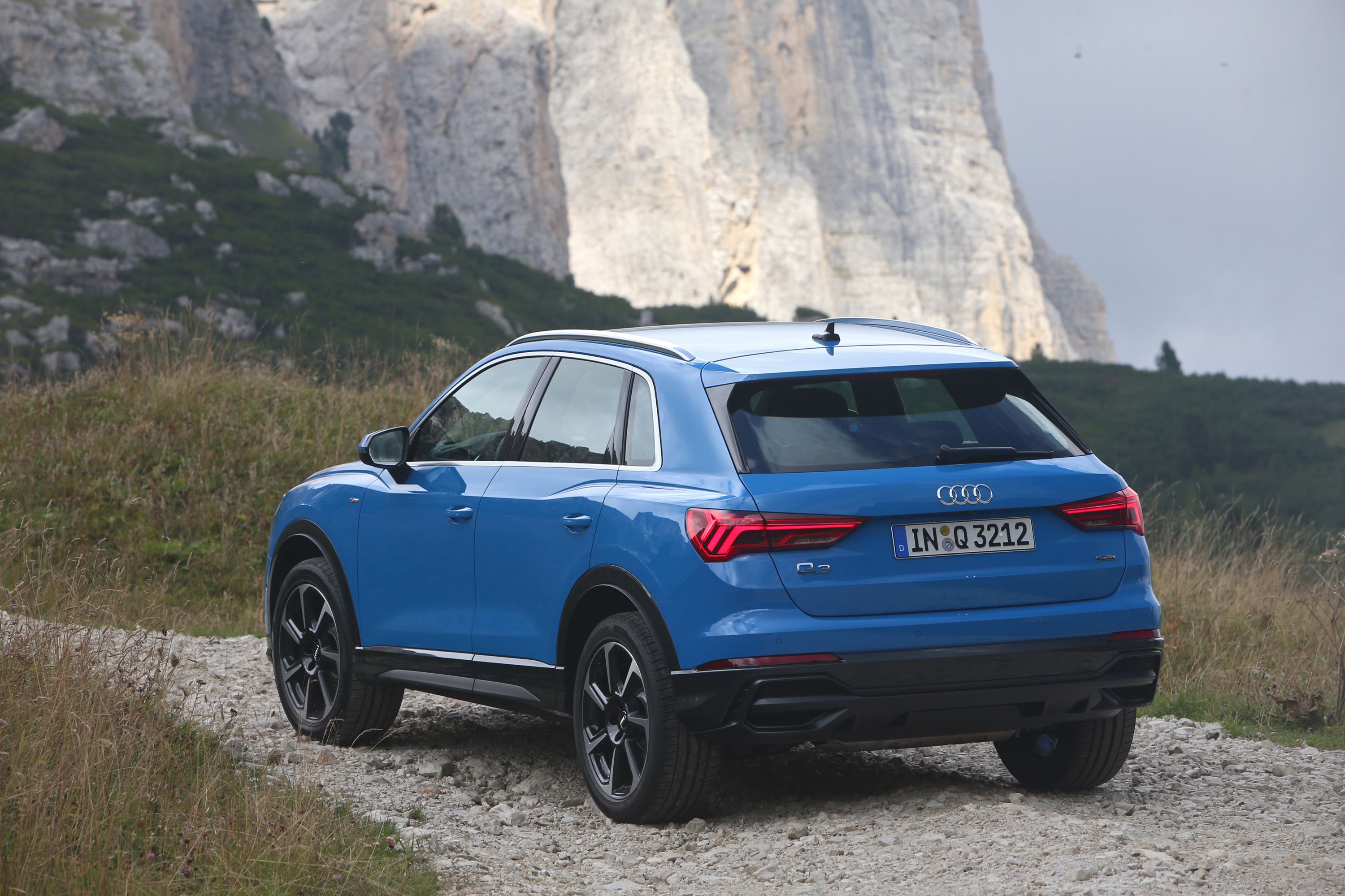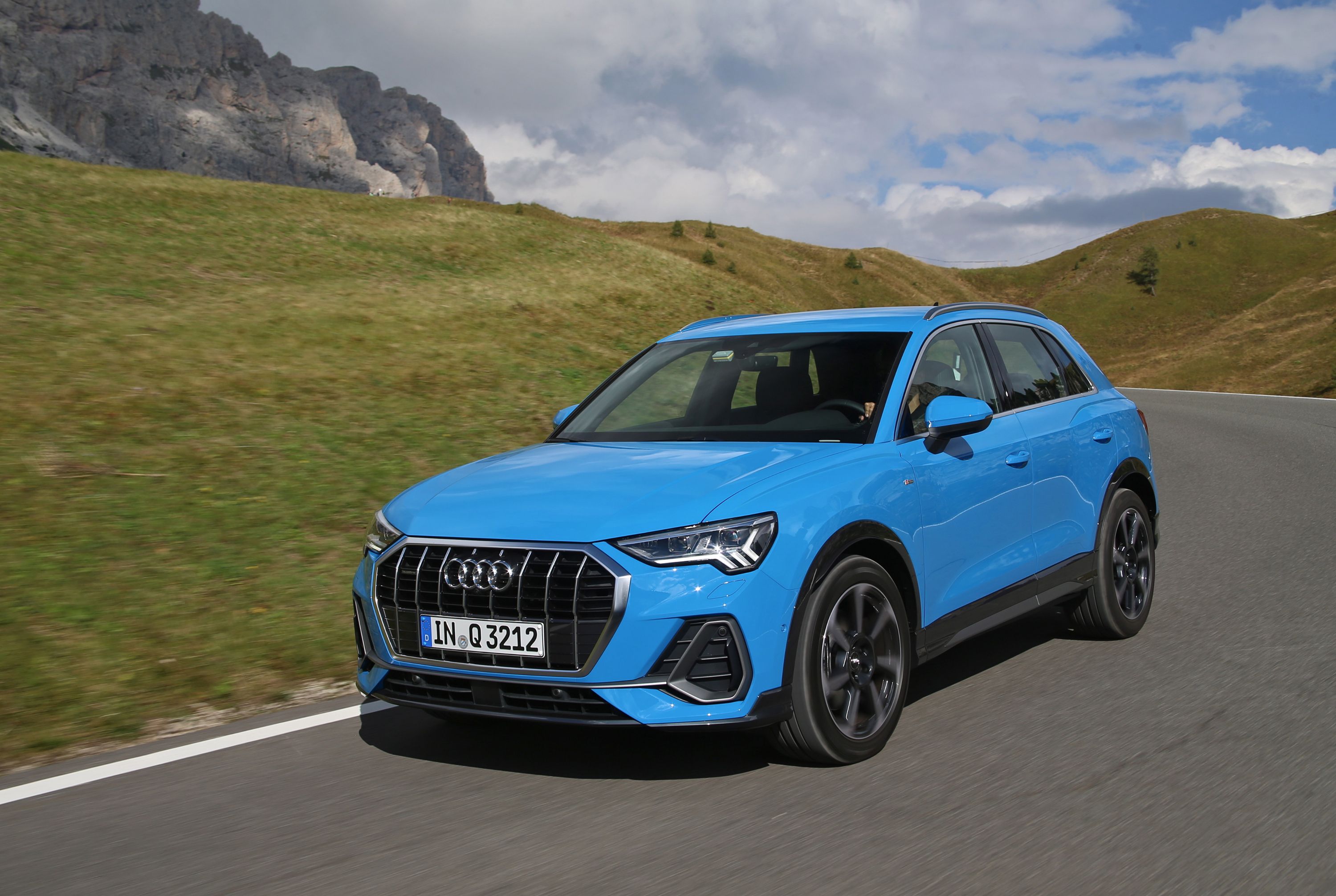2019 Audi Q3 First Drive Review: The Premium Compact SUV Blueprint
In mid-2011, Audi entered the premium compact SUV market with a car that sat below the Q5. Based on the VW Group A5 platform as used by the Golf Mk 5 and Tiguan, the Q3 was designed as a compact SUV to take on the BMW X1 and the Japanese and Korean SUVs that contested the fast growing small SUV segment.
Produced at the Seat factory in Martorell in Spain for all export markets including China, and then in Audi's Chinese factory in Changchun from April 2013 just for that market, the first generation Q3 went on to become a 1.1 million sales success story.
While the mainstream Q3 was designed for four-cylinder petrol and diesel power only, Audi surprised its enthusiast buyers in 2013 by shoehorning its award winning five-cylinder motor from the TT RS in to the Q3. With 310 hp on tap the RS Q3 brought some real performance to a market segment filled with utilitarian family haulers. Two years later, a revised model received 340 hp, with the even faster 367-hp RS Q3 performance arriving with little fanfare in 2016.
Seven years on the SUV market remains buoyant and with the compact segment still the fastest growth area of the auto industry. In the interim Audi launched the entry-level Q2 to fill the void below the Q3, while the second generation Q5 raised the bar in the class above.
The all-new second generation Q3 shares the VW Group's MQB A2 platform with the new VW Tiguan, Skoda Karoq, and Seat Ateca. The top of the range Q3 45 TFSI weighs 3,737 lb, which is 110 lb more than the original. This is a modest increase when you consider the new car has grown 3.8-inch longer overall on a 3.03-inch longer wheelbase, with a 1.0-inch wider front track, and more standard equipment. Interestingly, 66 lb of the extra mass comes from the adjustable rear seat alone.
New Look, New Attitude
First impressions are of a car that looks and is longer and sleeker than its predecessor. Where the original Q3 was rounded and slightly dainty in appearance, the new car is angular with muscular ur-quattro style wheel arches for more visual gravitas.
The larger and more angular octagonal edged front grille gives the new Q3 a more aggressive face, yet the slim-line headlamp clusters, LED as standard and LED with daytime running lights (DLR) and LED Matrix as options, help to visually reduce the height of the front and emphasise its width. The Q3 is the only car in its class with the option of LED Matrix lights.
While the roofline is almost horizontal to the benefit of rear seat headroom, the steeply raked D-pillars give the car a reasonably sleek rear quarter. The metal under the rear hatch glass is rounded like the original and is the only real styling motif the two generations of Q3 have in common.
State Of The Art Cabin
The more sophisticated appearance continues in the cabin where your eye is drawn to the 10.25-inch virtual cockpit instrument cluster that has been an Audi feature since the current TT bowed in exactly four years ago. What really makes it is the new 10.1-inch black glass display first seen on the A6/A7/A8 models above the center console. A larger 12.3-inch Virtual Cockpit screen is an option. Last but not least the new Q3 features the layered dashboard design that appears on the e-tron.
Going one better the Q3 uses Alcantara in a contrasting color on the horizontal surface between the dashboard top and middle section and also on the door armrests along with dual stitching. Night illumination is supplemented by ambient LED lighting with a choice of 30 colours.
Small touches like this and the cast aluminum door openers deliver a sense of visual and tactile quality and upmarket exclusivity beyond the norm for this class of car. In this respect the new Q3 is even a step ahead of big brother Q5.
Audi is determined to bring much of the technology and safety systems from its larger, more expensive models down the range and the new Q3 has optional features like a four camera top view, Parking Assist, and Adaptive Cruise Control. And where Cross Traffic front camera assistance has been around for a couple of years with the German manufacturers, Audi now offers a Cross traffic rear camera system for the Q3.
The extra cabin room is very obvious in terms of rear passenger legroom as is the larger trunk. The luggage compartments gain is considerable, and now offers 18.7 cu. ft. with the standard equipment adjustable seat in the normal position and 23.8 cu. ft. with it moved forwards by 6.0 inches.
The seat backrest is split 40/20/40 to accommodate long loads, and its angle can be adjusted in seven stages. With it folded flat the 53.85 cu. ft. cargo area matches a good medium size station wagon. A neat feature is the ability to stow the rear parcel shelf below the height adjustable trunk floor.
Three Suspension Choices
Irrespective of whether it has front or four-wheel-drive, the Q3 suspension set up uses MacPherson struts in front with a four-link independent design at the rear. Three chassis specifications are available - Standard, Sport, and with Adaptive Damping. The Sport option has uprated springs and anti-roll bars, while the version with adaptive damping uses the standard springs to optimize ride comfort in its softest setting.
Q3 chassis engineer Jochen Fischer explained that his team set out to ensure there were clear differences between the different driver selectable modes of the electronically controlled active damping. "We were aiming for a car with a sporting character but not at the expense of ride comfort," he said.
One of the objectives was to lower internal friction in the damper valves. This means that the dampers are able to react to short, sharp bumps more quickly, opening with less force and so providing a smoother secondary ride. "All three system have exactly the same ride height so that off-road ability is not compromised by a sportier set up," explained Jochen.
A main influence on ride comfort and mechanical grip will be the wheel size chosen by the customer. This ranges from 17-inch wheels with 215/65R17 tires on the entry-level model to the largest 20-inch wheels. Audi uses Hankook tires for the 19 and 20-inch wheels and Michelins for the 18-inch size. The 2.0 liter- gasoline 45 TFSI test cars we drove wore 255/45R19 rubber.
Refined Four-Cylinder Power
The third generation EA888 all-alloy turbocharged 1,968cc four-cylinder used in the 40 TFSI and 45 TFSI models is essentially the engine used in the VW Golf GTI and other models in the VW Group. However, as the Q3 is a larger and heavier car than a Golf GTI, and has off-road capability, it requires bespoke mapping of the power and torque curves.
"The Q3's specific ECU mapping result in the ability to increase boost pressure up to a maximum of 33.4 psi to maintain rated power all the way from sea level to an altitude of 2,000 meters and in ambient temperatures of up to 104°F," explained powertrain development engineer Martin Schneider.
Direct fuel injection is very efficient but actually produces more particulates. To help the engine meet the latest WLTP emissions regulations the four Direct Injection nozzles are supplemented by a traditional Multi-point Injection system with a single injector per cylinder on a fuel rail feeding the intake manifold.
The base front-wheel-drive only 35 TFSI model uses a 1.5-liter version of this engine producing 150 hp from 5,000-6,000 rpm, with 184 lb-ft of torque from 1,500-3,500 rpm. It has a 9.2-seconf 0-62 mph time and a 129 mph top speed.
"While the 1.5-liter engine uses a relatively compact combined catalytic converter/particulate filter unit, the greater airflow mass of the 2.0-liter TFSI engine requires larger, separate units," said Martin. "In this case the particulate filter is fitted under the floor downstream of the catalytic converter. As petrol particulates are not as large the filter is smaller than the one fitted to the 2.0 TDI motor."
The base transmission is a six-speed manual, which we drove in the 35 TDI quattro. The more powerful 40 TDI and the 45 TFSI come with the seven-speed S-Tronic twin-clutch automatic and quattro 4WD as standard.
The 35 TDI represented the oil burning models at the launch event, and its 2.0-liter turbo-diesel makes 150 hp from 3,500-4,000 rpm, underpinned by 251 lb-ft of torque from 1,750-3,000 rpm. It takes 9.3 seconds to reach 62 mph, and top speed is 131 mph.
The 45 TFSI packs a potent 230-hp punch between 5,000 and 6,700 rpm, with 258 lb-ft of torque between 1,500 and 4,400 rpm. This makes for a rapid 6.3-second sprint to 62 mph and a 145-mph Vmax. Using a detuned version of the same engine, the lesser 40 TFSI model has 190 hp and 236 lb-ft of torque.
While the engine bay and cabin are well insulated there is no getting away from the fact that the 35 TDI is fueled by heavy oil. From start up and driving around town it sounds and feels like a four-cylinder diesel, albeit one of the best of its kind. It is best at cruise in sixth gear where its acoustics fade into the background.
Although the manual gearshift is slick and positive and the pedals set up nicely for heel and toe downshifts the diesel driving experience is not a thing of joy. The heavy flywheel, relatively slow revving ability and the limited power band of the diesel militate against it from an enthusiast's point of view. The automatic transmission is a far better partner for this engine.
A Range Of Driving Personalities
In stark contrast, the 45 TFSI with adaptive damping can be a pretty entertaining drive in Sport mode. While the power steering seems a bit light and lacking in feedback in Comfort mode we were encouraged by the extra weight and feel that arrived in Sport mode.
Together with lower roll angles engendered by the dampers stiffening up the modest physical size of the car and its agile chassis work nicely together to make enthusiastic driving on a twisty road quite rewarding.
This was certainly the case on the demanding mountain roads with many tight curves and hairpins that was part of the test route. We could trail brake deep into corners with good front end grip and a stable rear, while the unerring traction of the quattro 4WD allowed us to pour on the coals on the exit, even on a sometimes damp surface.
Revving freely to its redline the 2.0-liter TFSI motor's beefy torque curve delivers punchy mid-range acceleration. This makes for rapid exits from bends and swift overtaking on the straight bits. It is a perfect partner for the seven-speed twin clutch S-Tronic gearbox with paddle shift control, which delivers smooth and rapid up and down ratio changes.
In terms of ride quality the work the engineers have done on the suspension has paid off. Although we only drove cars with the adaptive damping it impressed deeply. Despite the 19-inch wheels you can feel the refined secondary ride in Comfort mode with a suspension that can breathe over short, sharp bumps while retaining decent body control.
Choose the Sport setting on the Drive Select button and the ride firms up noticeably but still retains fair comfort. It is not my default choice for all surfaces by any means but on smooth roads the lower roll, better body control, and sharper, weightier steering are definite pluses.
The new Q3 goes on sale in Europe in November this year. As it will not reach US showrooms till early summer 2019, the final specification is yet to be fixed, but Audi confirm that the US version will feature quattro 4WD and one suspension setting, along with a full bodywork paint finish. The only engine offered in the US will be the 2.0 TFSI, with the choice of 184hp / 236 lb ft and 228hp / 258 lb ft versions, both paired with the eight-speed Tiptronic gearbox.
Feeling grown up and sophisticated with a cabin design and telematics a generation ahead of its bigger brother, the new Audi Q3 may well steal sales from the Q5 amongst buyers who do not play the numbers status game.






